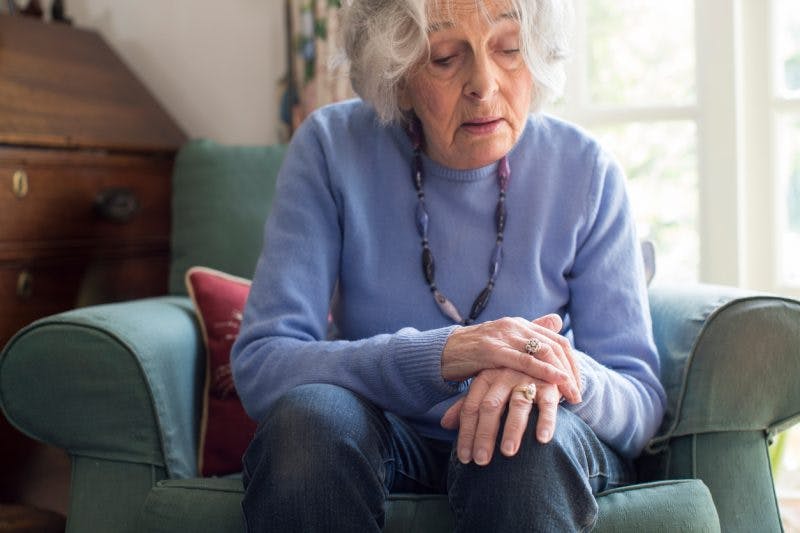Clonus after stroke appears as uncontrollable, rhythmic muscle contractions. Although this can mimic tremors, clonus is its own condition and needs to be treated as such. Clonus can result from various neurological injuries, but stroke is a common cause of this secondary effect.
To help you understand clonus after stroke, we will review the pathology of this condition and possible symptoms and triggers. We will also discuss potential treatment options available during your rehabilitation journey. There is always hope for recovery after stroke, so this article can help encourage you to continue pursuing your goals.
What Causes Clonus After Stroke?
When a stroke occurs, blood flow to the brain is interrupted due to a blockage (ischemic stroke) or a rupture (hemorrhagic stroke). This results in tissue damage within the brain and can affect the ability of the impacted areas to perform their normal functions.
Due to this tissue damage, stroke survivors often experience a variety of secondary effects that can be motor, sensory, or cognitive in nature. For example, survivors may experience weakness on one side, decreased sensation in one or more limbs, poor memory, or difficulty swallowing after stroke. Another possible secondary effect after stroke is clonus.
Clonus is a neurological condition that results in unintentional, pulsing muscular contractions. The exact mechanism of clonus isn’t fully understood, but this condition is largely associated with hyperexcitability (increased sensitivity) of neural pathways. These neural pathways are responsible for getting information from your brain to your muscles, but this increased excitability can cause unwanted reactions to certain movements.
Clonus after stroke most commonly occurs in the ankles and knees, but it can occur in other areas as well, including the arms. Clonus is often confused with tremors after stroke because both involve unintentional shaking or rhythmic movements. However, clonus is triggered by stretching of the affected muscles while tremors are not.
Clonus may occur alongside spasticity, which is a common secondary effect of stroke. Spasticity involves tight, stiff muscles that are in a state of over-contraction. Spasticity, however, is velocity-dependent muscle tightness. This means the faster the muscle is stretched, the tighter and more spastic it becomes.
In contrast, clonus reacts to a stretch reflex by causing an involuntary, pulsing contraction of the muscles rather than a gradual increase in tension. Therefore, when a muscle is quickly stretched, that muscle will overreact and spasm rhythmically.
The differences between clonus and other neurological conditions like tremors after stroke make it especially important to work with your doctor and rehab team for proper diagnosis and intervention. To help you seek the care you need, we will now review the symptoms of clonus after stroke.
Symptoms of Clonus After Stroke
Although clonus can occur due to a variety of neurological conditions, there are common symptoms that mark the presence of this secondary effect. For example, individuals affected by clonus after stroke often experience:
- Rhythmic shaking stimulated by a quick stretch or position change.
- Increased muscle tone or pain.
- Involuntary movements like bending or crossing of the arm or leg.
- Decreased balance due to rhythmic contractions.
- Muscle fatigue due to muscle contraction for extended periods of time.
- Disturbed sleep often results in excessive daytime sleepiness.
- Spasticity as a co-occurring condition
- Muscle and joint contractures as a co-occurring condition
If you struggle with any of these symptoms, talk to your doctor. They can help diagnose your condition and recommend treatment, which we will discuss in the next section.
Treatment for Clonus After Stroke
Although there is no specific cure for clonus after stroke, a variety of interventions can help prevent or decrease these rhythmic muscle contractions. Since every individual is unique and will present with unique symptoms, a combination of these treatments is often utilized to maximize functional improvements.
Examples of treatments for clonus after stroke include:
1. Rehabilitation Exercise
Rehabilitation exercise focuses on practicing specific movements to help rewire the brain through neuroplasticity. This includes physical therapy, occupational therapy, and speech therapy.
Although the brain’s motor cortex may have been affected by stroke, a process called neuroplasticity allows healthy parts of the brain to “pick up the slack” for those injured areas. This involves rewiring the neural pathways between the brain and muscles. Clonus may subside as the brain relearns how to communicate with your muscles.
Repetition, or massed practice, is the key to rewiring these pathways, which is why rehabilitation exercise is so important. Each time you practice an exercise, you fire specific neurons in the brain. The more these neurons fire together, the stronger their connection becomes.
Rehab exercise is a safe, non-invasive treatment for clonus after stroke. In addition to exercises performed during therapy sessions, your rehab team will provide you with rehabilitation exercises you can safely practice at home. Dedication to your rehab program will maximize your results and help you reach your goals for recovery.
Want 25 pages of stroke recovery exercises in a PDF? Click here to download our free Stroke Rehab Exercise ebook now (link opens a pop up for uninterrupted reading)
2. Medications
In addition to rehabilitative exercise, medication is another intervention that can help reduce clonus after stroke and improve your function. Pharmacological intervention for this condition often includes medications such as muscle relaxants (like baclofen and tizanidine) and sedatives (like clonazepam and diazepam).
While these medications will not cure clonus, they can help temporarily reduce clonus symptoms and spasticity to provide relief. This relief can allow you to make larger gains during rehab exercises and improve your function during your daily activities. Talk to your doctor to see if medication is appropriate to address your specific symptoms.
3. Botox
Botox injections are another intervention commonly used to address clonus after stroke. When Botox is injected into the affected muscle, this acts as a nerve block to reduce the hyperexcitability or spasm of that muscle. As a result, clonus may be less evident and the presence of these uncontrolled spasms can be reduced.
Although Botox injections are temporary and generally wear off in weeks or months, this can help relieve the symptoms of clonus after stroke and maximize function. While the clonus is temporarily reduced, patients can practice physical therapy exercises to rewire the brain and improve clonus long-term.
4. Surgery
If clonus is affecting your quality of life and none of the above treatments help, then your doctor may recommend surgery. This is a last resort and is used only in specific cases. This type of surgery generally involves cutting parts of the nerve responsible for the muscle spasms, therefore reducing clonus.
Coping with Clonus After Stroke
Clonus is a secondary effect commonly experienced by survivors of stroke. When tissue damage within the brain causes hyperexcitability or misfiring of motor neurons, the result is rhythmic muscle spasms. These spasms generally happen in response to a quick stretch of the affected muscle.
While clonus after stroke can affect many aspects of daily life for a survivor, there is hope for recovery because the brain is capable of rewiring itself via neuroplasticity. This rewiring can happen through a combination of effective treatments, including rehabilitation and medication.
It is vital to work with your medical team to develop a treatment plan specific to your symptoms and goals. Through consistent, dedicated rehab and appropriate medical management, you can help manage clonus after stroke and improve your daily function.










